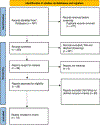Efficacy and Safety of Optic Nerve Sheath Fenestration for Idiopathic Intracranial Hypertension. A Subgroup-Focused Systematic Review and Meta-Analysis
- PMID: 40697497
- PMCID: PMC12282507
- DOI: 10.71079/aside.im.1542545
Efficacy and Safety of Optic Nerve Sheath Fenestration for Idiopathic Intracranial Hypertension. A Subgroup-Focused Systematic Review and Meta-Analysis
Abstract
Introduction: Optic nerve sheath fenestration (ONSF) is an important surgical management option for idiopathic intracranial hypertension (IIH) who failed medical treatment. We conducted a systematic review and meta-analysis to evaluate the outcomes of ONSF, with a focus to identify factors affecting treatment success.
Methods: A literature search was conducted up to December 2024. Primary outcomes included improvement in visual acuity, visual fields, and optic disc swelling resolution. We performed a detailed subgroup analysis based on geographic location, study design, surgical approach, and technical variations.
Results: Nineteen studies with a total of 1,159 patients were included in our study. ONSF significantly improved visual acuity in 34.5% (95% CI: 31.8-37.3%) and visual fields in 69.4% (95% CI: 65.9-72.7%) of cases. A 90.9% improvement rate was observed in reducing optic disc swelling. Significant heterogeneity was noted in visual acuity (I2=92.1%) and visual field improvements (I2=73.8%). The overall complication rate was 9% (95% CI: 5-16%). Centers that included 30 or more patients in their study demonstrated significantly lower postoperative complications.
Conclusions: ONSF demonstrates favorable efficacy in improving visual outcomes with an acceptable safety profile, lower postoperative complications were observed when the procedure was performed in high-volume centers using appropriate surgical techniques. Geographic variations and surgical approaches significantly affected outcomes, highlighting the importance of standardized protocols and adequate surgical experience. Future prospective studies with standardized outcome measures are needed to optimize patient selection and surgical techniques.
Keywords: Benign Intracranial Hypertension; Idiopathic Intracranial Hypertension; Meta-Analysis; Optic Nerve Sheath Fenestration; Systematic Review; Visual Outcomes.
Conflict of interest statement
Conflicts of Interest: The authors declare no competing interests that could have influenced the objectivity or outcome of this research.
Figures
Similar articles
-
Effectiveness of optic nerve sheath fenestration in preserving vision in idiopathic intracranial hypertension: an updated meta-analysis and systematic review.Acta Neurochir (Wien). 2024 Nov 25;166(1):476. doi: 10.1007/s00701-024-06345-y. Acta Neurochir (Wien). 2024. PMID: 39585430 Free PMC article.
-
Interventions for idiopathic intracranial hypertension.Cochrane Database Syst Rev. 2015 Aug 7;2015(8):CD003434. doi: 10.1002/14651858.CD003434.pub3. Cochrane Database Syst Rev. 2015. PMID: 26250102 Free PMC article.
-
Systemic pharmacological treatments for chronic plaque psoriasis: a network meta-analysis.Cochrane Database Syst Rev. 2021 Apr 19;4(4):CD011535. doi: 10.1002/14651858.CD011535.pub4. Cochrane Database Syst Rev. 2021. Update in: Cochrane Database Syst Rev. 2022 May 23;5:CD011535. doi: 10.1002/14651858.CD011535.pub5. PMID: 33871055 Free PMC article. Updated.
-
Does optic nerve sheath fenestration alleviate headaches in patients with idiopathic intracranial hypertension? A retrospective study.J Clin Neurosci. 2025 Jul 1;139:111447. doi: 10.1016/j.jocn.2025.111447. Online ahead of print. J Clin Neurosci. 2025. PMID: 40602272
-
Systemic pharmacological treatments for chronic plaque psoriasis: a network meta-analysis.Cochrane Database Syst Rev. 2017 Dec 22;12(12):CD011535. doi: 10.1002/14651858.CD011535.pub2. Cochrane Database Syst Rev. 2017. Update in: Cochrane Database Syst Rev. 2020 Jan 9;1:CD011535. doi: 10.1002/14651858.CD011535.pub3. PMID: 29271481 Free PMC article. Updated.
References
-
- Colman BD, Boonstra F, Nguyen MN, Raviskanthan S, Sumithran P, White O, Hutton EJ, Fielding J, van der Walt A. Understanding the pathophysiology of idiopathic intracranial hypertension (IIH): a review of recent developments. Journal of neurology, neurosurgery, and psychiatry. 2024: 375 [ 10.1136/jnnp-2023-332222] - DOI - PubMed
-
- Bsteh G, Macher S, Krajnc N, Marik W, Michl M, Muller N, Zaic S, Harreiter J, Novak K, Wober C, Pemp B. An interdisciplinary integrated specialized one-stop outpatient clinic for idiopathic intracranial hypertension-a comprehensive assessment of clinical outcome. European journal of neurology. 2024: e16401 [ 10.1111/ene.16401] - DOI - PMC - PubMed
-
- Mollan SP, Davies B, Silver NC, Shaw S, Mallucci CL, Wakerley BR, Krishnan A, Chavda SV, Ramalingam S, Edwards J, Hemmings K, Williamson M, Burdon MA, Hassan-Smith G, Digre K, Liu GT, Jensen RH, Sinclair AJ. Idiopathic intracranial hypertension: consensus guidelines on management. Journal of neurology, neurosurgery, and psychiatry. 2018: 1088 [ 10.1136/jnnp-2017-317440] - DOI - PMC - PubMed
Grants and funding
LinkOut - more resources
Full Text Sources


